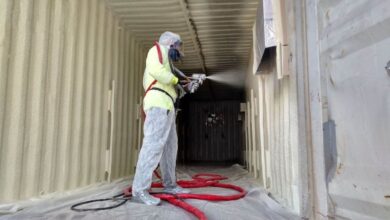Which Type of Security is Needed on a Construction Site?

Construction site inherently harbour multiple vulnerabilities, making security a critical priority. The implementation of stringent security protocols becomes imperative to safeguard both the workforce and the valuable assets comprising equipment and materials. Comprehensive security measures serve as a shield against potential threats, ensuring a safe environment amidst the bustling construction activities. Erecting secure perimeters, controlling access points, and integrating surveillance systems create layers of protection against unauthorised entry and theft.
Moreover, the utilisation of temporary construction security cameras plays a pivotal role in bolstering the site’s defences. These cameras not only act as vigilant eyes, monitoring activities round the clock, but they also serve as a deterrent against potential intruders or misconduct. By amalgamating physical barriers, access control, surveillance technology, and vigilant personnel, construction site can significantly mitigate risks and foster a secure workspace conducive to efficient operations. The ongoing maintenance and periodic evaluations of these security measures reinforce their efficacy, ensuring continual safety for all involved. Here’s a comprehensive guide on the types of security necessary for a construction site
Physical Barriers:
Installing physical barriers serves as a fundamental approach to securing a construction site, dissuading unauthorised entry and safeguarding valuable assets. These barriers encompass a range of elements like fences, gates, locks, signs, lighting, and alarms. The choice of barriers should align with site-specific factors such as size, location, surroundings, and regulatory requirements. For instance, sites adjacent to high-traffic roads or public spaces might necessitate taller fences or sturdy concrete barriers. Conversely, isolated or poorly lit areas might benefit from motion-activated lighting and alarm systems, enhancing security vigilance and deterring potential threats. Tailoring the selection of physical barriers to site-specific needs ensures a robust defence mechanism against diverse security risks.
Risk Assessment:
Commence the security process by undertaking an exhaustive risk assessment of the construction site. This encompasses a detailed evaluation of the site layout, geographical positioning, neighbouring surroundings, and historical security incidents. Pinpoint vulnerable zones that could entice unauthorised individuals, such as spots housing equipment, utility access points, or areas lacking proper visibility. Moreover, analyse the efficiency of current security measures to pinpoint any deficiencies or vulnerabilities requiring immediate attention. This meticulous assessment provides crucial insights, enabling tailored security strategies to fortify weak points and ensure comprehensive protection for the construction site.
Access Control:
Access control systems, often underestimated in construction security, offer immense value. These systems fuse software and hardware, linking entry points to smart devices that validate worker credentials, thwarting unauthorised access. This dual-layered strategy bolsters security by barring entry to unqualified personnel, heightening safety during off-hours. Yet, the efficacy of access control hinges on on-site enforcement and fortified perimeter security measures. These systems serve as a linchpin in shielding construction site. They not only prevent mishaps and ensure adherence to regulations but also curtail the risk of theft or vandalism, contributing significantly to a safer and more secure working environment.
Warning Signs:
Signage might not immediately strike as a security measure, yet its impact on a job site’s security is noteworthy. When signs explicitly detail the repercussions of unauthorised access, potential intruders reconsider their actions. Clear, concise signage serves as a deterrent by emphasising the legal consequences associated with damaging or pilfering property. Such signage not only mitigates common theft and vandalism issues but also dissuades mischief-makers seeking a thrill. By highlighting the penalties for such behaviour, these signs redirect potential troublemakers towards more constructive activities, contributing significantly to maintaining a secure and undisturbed construction environment.
Thorough Equipment Identification and Inventory:
Efficiently managing equipment inventory is often overlooked at construction site. Establishing a centralised system for equipment identification and tracking proves crucial. Each tool and equipment should bear unique markers in multiple locations, often engraved with owner-applied numbers to deter theft. Distributing identification across various points serves as a deterrent, preventing thieves from erasing all identifying marks.
Furthermore, a regularly updated inventory list aids in retaining equipment on-site and expedites stolen equipment recovery by enhancing identification details. This meticulous approach not only safeguards assets but also streamlines inventory management, ensuring efficient usage and maintenance of tools and equipment across the construction site.
Temporary Construction Security Cameras:
Video surveillance stands out as a highly potent security measure for construction site. The customisation of surveillance systems according to specific site requirements is paramount. Visible placement of construction site security cameras acts as a deterrent, but selecting equipment with optimal features and high resolution ensures not only deterrence but also enhances the chances of identifying culprits.
Tailoring the surveillance setup to meet unique security needs allows for the exploration of additional features. These could include night vision capabilities, motion detection, remote access, or even integration with other security systems. Such enhancements augment the effectiveness of the surveillance system, fortifying the site against potential threats and ensuring comprehensive monitoring and security oversight.





